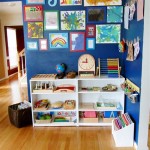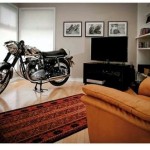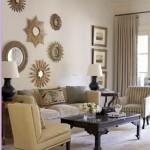Living Room Decorating Tips and Tricks
The living room serves as a central hub within the home, often acting as a space for relaxation, entertainment, and social interaction. Effective living room decoration necessitates a careful balance of aesthetics, functionality, and personal expression. This article provides a comprehensive overview of decorating tips and tricks designed to enhance the visual appeal and usability of this vital space.
Planning and Preparation
Before commencing any decorating project, a thorough planning phase is essential. This involves assessing the existing space, identifying specific needs and preferences, and establishing a clear vision for the desired outcome. Consider the room's dimensions, natural light sources, and existing architectural features.
A crucial first step is to measure the room accurately. This allows for informed decisions regarding furniture size and placement. Creating a floor plan, either on paper or using digital tools, can help visualize different layout options. This preemptive planning helps avoid costly mistakes and ensures that chosen furniture and accessories fit comfortably within the available space.
Identifying the primary function of the living room is also paramount. Will it primarily serve as a space for watching television, entertaining guests, or reading? The intended use will dictate furniture choices, seating arrangements, and accessory selection. For example, a room intended for frequent television viewing may prioritize comfortable seating and a strategically positioned entertainment unit.
Establishing a budget is a critical aspect of the planning phase. Decorating projects can quickly escalate in cost if a budget is not adhered to. Allocate funds for essential items, such as furniture, paint, and lighting, and factor in a contingency fund for unexpected expenses. Explore options for cost-effective decorating, such as repurposing existing furniture, shopping at thrift stores, or opting for DIY projects.
Inspiration gathering is an integral part of the planning process. Explore interior design magazines, online platforms like Pinterest and Houzz, and home decor blogs. Collect images of living rooms that resonate with your personal style and preferences. Analyze the elements that appeal to you, such as color palettes, furniture styles, and decorative accents. This curated collection of inspiration will serve as a visual guide throughout the decorating process.
Color Palette Selection
Color plays a significant role in setting the mood and atmosphere of a living room. The chosen color palette should reflect personal preferences while considering the room's natural light and overall size. Light colors tend to make a space feel larger and brighter, while darker colors can create a sense of warmth and intimacy.
A classic approach is to select a neutral base color for the walls, such as beige, gray, or off-white. These neutral tones provide a versatile backdrop for accent colors in furniture, accessories, and artwork. They allow for greater flexibility in changing the room's aesthetic over time without requiring a complete re-painting.
Consider incorporating accent colors strategically to add visual interest and personality. Accent colors can be introduced through throw pillows, blankets, area rugs, artwork, and decorative objects. A popular approach is the 60-30-10 rule, where 60% of the room is dominated by the primary color, 30% by a secondary color, and 10% by an accent color. This creates a balanced and harmonious color scheme.
The undertones of colors are crucial to consider. Colors can have warm, cool, or neutral undertones. Mixing warm and cool undertones haphazardly can create a discordant effect. Select colors with complementary undertones to ensure a cohesive and visually appealing palette. Warm undertones (red, orange, yellow) create a sense of energy and vibrancy, while cool undertones (blue, green, purple) evoke a sense of calmness and tranquility.
Before committing to a specific color, test paint samples on the walls in various lighting conditions. Paint colors can appear different depending on the amount of natural and artificial light. Observe the colors at different times of day to ensure that they achieve the desired effect. Consider using peel-and-stick paint samples, which eliminate the need for painting directly on the walls.
Furniture Arrangement and Selection
The arrangement of furniture is critical to creating a functional and aesthetically pleasing living room. The furniture layout should facilitate conversation, optimize traffic flow, and maximize the available space. Prioritize creating a focal point within the room to draw the eye and establish a sense of balance.
The sofa is often the largest and most significant piece of furniture in the living room. Its placement will largely dictate the arrangement of other furniture. In smaller spaces, consider placing the sofa against a wall to maximize floor space. In larger rooms, the sofa can be positioned in the center of the room to create distinct zones.
Consider the placement of seating in relation to the focal point. The focal point could be a fireplace, a large window with a scenic view, or a television. Arrange seating to encourage conversation and interaction among occupants. Avoid blocking pathways or creating obstacles to movement.
The selection of furniture should reflect both personal style and functional needs. Choose furniture that is appropriately scaled for the room's dimensions. Overly large furniture can overwhelm a small space, while undersized furniture can appear lost in a large room. Measure furniture dimensions carefully before purchasing to ensure a proper fit.
Incorporate a variety of seating options to accommodate different needs and preferences. Include a combination of sofas, armchairs, and ottomans to provide comfortable seating for various activities. Consider adding a bench or pouf for additional seating that can be easily moved around the room.
Introduce functional and stylish storage solutions to keep the living room organized and clutter-free. Consider incorporating storage ottomans, bookshelves, or media consoles to store books, games, and electronic devices. Choose storage solutions that complement the room's overall aesthetic and provide ample space to conceal clutter.
Lighting Strategies
Effective lighting plays a critical role in creating a warm, inviting, and functional living room environment. A well-lit living room enhances visual appeal, improves usability, and contributes to a sense of comfort and relaxation. A layered approach to lighting is generally the most effective, incorporating ambient, task, and accent lighting.
Ambient lighting provides overall illumination for the room. This can be achieved through ceiling fixtures, recessed lighting, or floor lamps. Choose ambient lighting fixtures that complement the room's style and provide a soft, diffused light. Avoid harsh, direct lighting that can create glare and discomfort.
Task lighting is designed to provide focused illumination for specific activities, such as reading or working. Incorporate table lamps or floor lamps with adjustable arms to direct light where it is needed. Position task lighting near seating areas or desks to provide adequate illumination for these activities.
Accent lighting is used to highlight specific features within the room, such as artwork, architectural details, or decorative objects. Use spotlights or track lighting to draw attention to these focal points. Accent lighting can also be used to create a sense of depth and dimension within the room.
Consider the use of natural light to enhance the living room's ambiance. Maximize natural light by keeping windows clean and unobstructed. Use sheer curtains or blinds to allow light to filter into the room while maintaining privacy. Strategically placed mirrors can also help to reflect and amplify natural light.
Control over lighting levels is essential for creating a versatile and adaptable living room environment. Install dimmer switches on overhead fixtures and lamps to adjust the brightness level according to the time of day and the intended activity. Dimmers allow for creating a more relaxed and intimate atmosphere in the evening or providing brighter light for daytime activities.
Accessorizing and Personal Touches
Accessories provide the finishing touches to a living room, adding personality, character, and visual interest. Carefully curated accessories can transform a generic space into a personalized and inviting environment. When selecting accessories, consider the room's overall style, color palette, and functional needs.
Artwork is a powerful way to express personal style and create a focal point within the living room. Choose artwork that resonates with your taste and complements the room's color scheme. Consider a variety of mediums, such as paintings, prints, photographs, and sculptures. Arrange artwork strategically to draw the eye and create visual interest.
Textiles, such as throw pillows, blankets, and rugs, add texture, warmth, and comfort to the living room. Choose textiles in a variety of colors, patterns, and textures to create visual interest and depth. Consider incorporating natural fibers, such as cotton, linen, or wool, to add a touch of luxury and sophistication.
Plants and flowers can bring life and vitality to a living room. Incorporate a variety of plants in different sizes and shapes to create a sense of natural beauty. Consider using potted plants, hanging plants, or floral arrangements. Choose plants that are appropriate for the room's lighting conditions and your level of gardening experience.
Personal mementos, such as photographs, souvenirs, and family heirlooms, add a personal touch to the living room and create a sense of connection to the past. Display these items thoughtfully to create a curated and meaningful display. Consider creating a gallery wall of framed photographs or displaying collectibles on a bookshelf.
Curating a collection of decorative objects, such as vases, candles, and sculptures, can add visual interest and personality to the living room. Choose objects that reflect your personal style and complement the room's overall aesthetic. Arrange these objects in groupings to create visually appealing vignettes.
Regularly declutter and reorganize accessories to maintain a fresh and uncluttered look. Remove items that are no longer needed or that detract from the room's overall aesthetic. Rotate accessories seasonally to create a sense of change and renewal.
:strip_icc()/cdn.cliqueinc.com__cache__posts__212361__-2030968-1483470364.700x0c-8571e60cad7b42a981ab29ae10b5c153-497b002f87af4747b2ab38b560e7c0fd.jpg?strip=all)
How To Decorate A Living Room 20 Ideas And Common Mistakes

77 Best Living Room Decor Ideas 2025 Unique
:strip_icc()/cdn.cliqueinc.com__cache__posts__212361__-2030971-1483470365.700x0c-bcb3742ec42e4ef297e814adf2ca7870-855bb6998a684a5ebffc99e1d4c922e1.jpg?strip=all)
How To Decorate A Living Room 20 Ideas And Common Mistakes

44 Best Small Living Room Ideas How To Decorate A

Seven Best Decorating Tips My Soulful Home
:max_bytes(150000):strip_icc()/thespruce-livingroom-BespokeOnly-1c43c0750c4a4c008dbc41ed643ec342.png?strip=all)
How To Decorate A Living Room In 13 Steps

Small Living Room Ideas Design Inspiration For Compact Spaces
:strip_icc()/cdn.cliqueinc.com__cache__posts__212361__-2030969-1483470364.700x0c-1eef0dc89e044eb299b3d7e584231333-99c2fb2948524833ba3ac30ed09fbf7e.jpg?strip=all)
How To Decorate A Living Room 20 Ideas And Common Mistakes

How To Decorate A Small Living Room Forbes Home

8 Designer Tricks To Create A Harmonious Look In Your Home Houzz Ie
Related Posts







